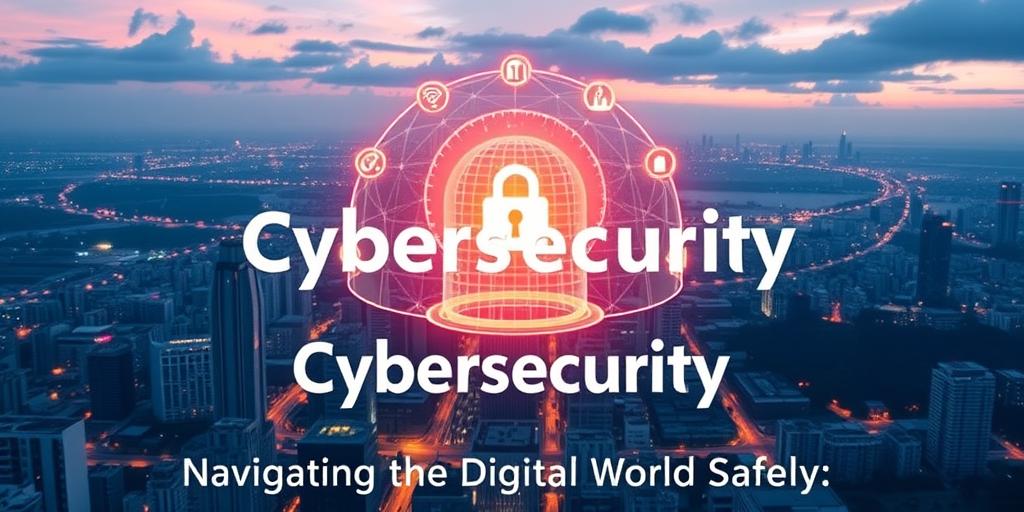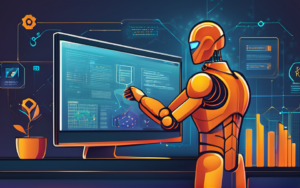The digital world offers a vast array of opportunities, connecting us to information, services, and each other in ways unimaginable just a few decades ago. However, this interconnectedness also presents a significant challenge: cybersecurity. As we navigate the digital landscape, protecting ourselves and our data from cyber threats is paramount.
Navigating the Digital Landscape: The Need for Cybersecurity
The digital world has become an integral part of our lives, impacting how we work, learn, shop, and communicate. However, this interconnectedness has also made us vulnerable to cyber threats.
The Growing Threat of Cyberattacks
Cyberattacks are becoming increasingly sophisticated and widespread, targeting individuals, businesses, and even governments. Hackers are constantly developing new methods to exploit vulnerabilities in our systems and steal sensitive information. The financial and reputational damage caused by cyberattacks can be devastating.
The Importance of Data Protection
Our data is valuable, containing sensitive information that could be misused if it falls into the wrong hands. From personal financial details to medical records, protecting our data is crucial for maintaining our privacy and security.
Securing Our Digital Lives
Cybersecurity is no longer just a concern for tech companies or large organizations. It’s essential for everyone who uses the internet. By understanding the risks and implementing basic cybersecurity measures, we can significantly reduce our vulnerability to cyber threats.
Understanding the Fundamentals of Cybersecurity
To effectively protect ourselves in the digital world, we need a basic understanding of cybersecurity principles and the threats we face.
Types of Cyber Threats
Cyberattacks can take many forms, each with its own methods and objectives. Some common types include:
Malware
Malware is software designed to harm your computer or network. It can steal your data, corrupt your files, or even take control of your system. Examples include viruses, worms, and Trojans.
Phishing
Phishing attacks attempt to trick you into revealing sensitive information, like passwords or credit card details, by impersonating legitimate organizations or individuals. They often use emails, text messages, or social media posts that appear authentic.
Ransomware
Ransomware encrypts your data and demands payment for its release. If you don’t pay the ransom, you may lose access to your files permanently.
Denial-of-Service Attacks
Denial-of-service (DoS) attacks overwhelm a website or network with traffic, making it inaccessible to legitimate users. These attacks can disrupt businesses and cause significant financial losses.
Key Cybersecurity Concepts
Several key concepts underpin effective cybersecurity practices:
Authentication and Authorization
Authentication verifies your identity, while authorization determines what you’re allowed to access. Multi-factor authentication (MFA) adds an extra layer of security by requiring you to provide multiple forms of identification, making it harder for unauthorized users to access your accounts.
Encryption
Encryption transforms data into an unreadable format, making it inaccessible to unauthorized individuals. This is essential for protecting sensitive data like passwords, financial information, and medical records.
Firewalls
Firewalls act as a barrier between your computer and the internet, blocking unauthorized access and malicious traffic. They help prevent hackers from gaining access to your system.
Intrusion Detection and Prevention Systems
Intrusion detection and prevention systems (IDPS) monitor your network for suspicious activity and alert you to potential threats. They can also take action to block or isolate malicious traffic.
Practical Steps to Enhance Your Cybersecurity
While cybersecurity can seem complex, there are simple steps you can take to improve your online safety.
Strong Passwords and Multi-Factor Authentication
Using strong, unique passwords for each of your accounts is essential. A strong password includes a mix of uppercase and lowercase letters, numbers, and symbols. Consider using a password manager to generate and store your passwords securely. Enabling multi-factor authentication (MFA) adds an extra layer of security by requiring you to provide multiple forms of identification, such as a password and a one-time code sent to your phone.
Be Wary of Phishing Attempts
Be cautious about suspicious emails, text messages, or social media posts. If you receive a message requesting personal information, verify its legitimacy before clicking any links or providing any details. Check the sender’s address, look for grammatical errors, and avoid clicking on links from unknown sources.
Keep Software Updated
Software updates often include security patches that fix vulnerabilities. Regularly updating your operating system, web browser, and other software is essential for protecting your system from known threats.
Use Antivirus and Anti-Malware Software
Antivirus and anti-malware software help detect and remove malicious software from your computer. Install reputable software and keep it updated to ensure it provides the latest protection.
Back Up Your Data Regularly
Back up your important data regularly to prevent data loss in case of a cyberattack or hardware failure. You can use cloud storage services, external hard drives, or other backup methods.
The Role of Cybersecurity Professionals
Cybersecurity is a complex field requiring specialized skills and knowledge. Professionals play a vital role in protecting our digital world.
Ethical Hackers and Penetration Testers
Ethical hackers and penetration testers use their skills to identify vulnerabilities in systems and networks before malicious actors can exploit them. They simulate real-world attacks to test security measures and recommend improvements.
Security Analysts and Incident Responders
Security analysts monitor systems and networks for suspicious activity, investigate security incidents, and develop strategies to mitigate threats. Incident responders are responsible for handling security breaches and restoring affected systems.
Cybersecurity Policy and Governance Experts
Cybersecurity policy and governance experts develop and implement security policies, procedures, and standards. They ensure that organizations comply with regulatory requirements and have appropriate security controls in place.
The Future of Cybersecurity
The digital landscape is constantly evolving, presenting new challenges and opportunities for cybersecurity.
Emerging Technologies and Threats
The rise of artificial intelligence (AI), the Internet of Things (IoT), and other emerging technologies introduces new cybersecurity threats. Hackers are constantly finding new ways to exploit these technologies, and cybersecurity professionals must adapt to these evolving threats.
The Importance of Cybersecurity Education
Cybersecurity education is crucial for individuals and organizations. By educating ourselves about cybersecurity best practices, we can make informed decisions about protecting our data and systems.
Building a More Secure Digital Future
Cybersecurity is a shared responsibility. By working together, individuals, businesses, and governments can build a more secure digital future. This requires a collaborative approach, focusing on prevention, detection, and response. By understanding the importance of cybersecurity and implementing appropriate measures, we can navigate the digital world safely and confidently.




